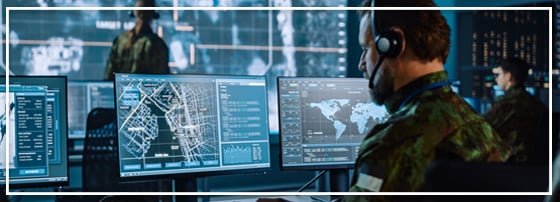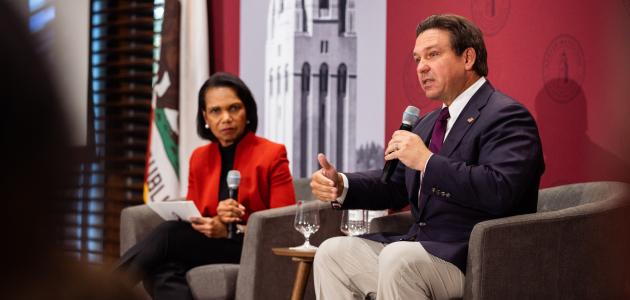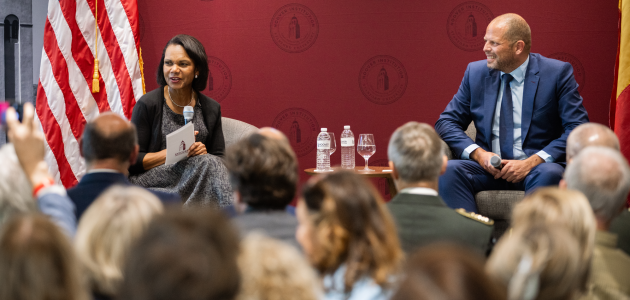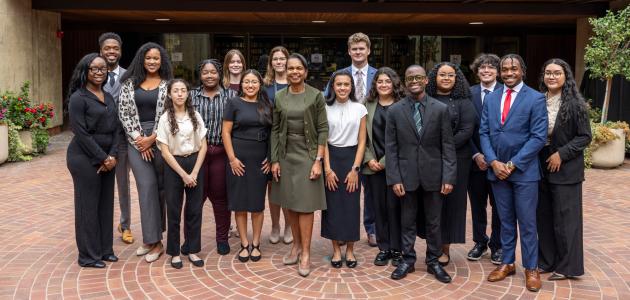In this edition of the Technology Policy Accelerator newsletter, Amy Zegart and Emerson Johnston build on their recent analysis of DeepSeek’s research talent pool, making recommendations on how US policymakers can keep America’s AI sector ahead of China’s. Defining Ideas features an excerpt from the Stanford Emerging Technology Review’s chapter on developments in space. And US Marine Corps Col. Jerome C. Greco writes about how tactics evolve in the military and provides evidence-based advice for making military organizations more agile, innovative, and adaptable.
Featured Analysis

Policy Implications of DeepSeek’s AI Talent Base
Building on their earlier analysis of the educational backgrounds of Chinese AI firm DeepSeek’s research pool, Senior Fellow Amy Zegart and coauthor Emerson Johnston move on to the policy implications of DeepSeek’s ability to rely largely on non-US-developed talent when building its latest large language model. As they argue, this means the US cannot rely on export controls alone to constrain future Chinese AI development, because the US is starting to lose its human capital edge in the AI competition as well. “The success of DeepSeek should act as an early-warning signal that human capital—not just hardware or algorithms—plays a crucial role in geopolitics and that America’s talent advantage is diminishing,” they write.
For US policymakers, the study finds that export controls on AI hardware may slow but will not stop China's AI advancement given its robust talent base. From a broader workforce perspective, visa restrictions on Chinese students could be counterproductive, as they might accelerate China's domestic talent development while reducing US influence.
Zegart and Johnston recommend that the US should strengthen its own AI talent pipeline by investing in education as well as by undertaking immigration reforms to attract and retain global talent. Finally, they urge US policymakers to focus on enhancing America's technological competitiveness by increasing research and development funding and by creating favorable conditions for AI innovation.
Read more here.

Tactical Innovation in the Military: A Primer
At its best, military innovation results from complementary top-down and bottom-up efforts. Senior leaders know this, and military commanders themselves want to innovate. What many do not have, however, is a thorough understanding of how to lead innovation efforts in their units.
A new essay from Hoover National Security Affairs Fellow Col. Jerome C. Greco (US Marine Corps) synthesizes research from multiple fields and provides leaders with evidence-based recommendations for making military organizations more adaptable, agile, and innovative.
Greco finds that critical battlefield advantages often grow from frontline adaptations. The essay also identifies proper incentive structures and supportive organizational cultures within military units as key drivers of successful innovation.
Read more here.

Enhancing the Warfighter’s Pipeline
In Defining Ideas, Distinguished Research Fellow Dan Berkenstock speaks to Policy Fellow Martin Giles, assistant director of Hoover’s Technology Policy Accelerator, about his new paper, “The Warfighter’s Pipeline,” which seeks to align US defense procurement needs with venture capital.
Berkenstock highlights significant shifts in the defense landscape over the past two decades, noting the ongoing transition from a slow, centralized planning and contracting process to a more dynamic and responsive system. Innovations in technology have accelerated, making traditional timelines obsolete and requiring the US Department of Defense to increasingly rely on commercial technologies.
Berkenstock emphasizes that venture-backed startups, especially those from technology hubs like Silicon Valley, are best positioned to experiment with cutting-edge technologies and create agile, innovative solutions that can be deployed at scale rapidly. He advocates for a new defense industrial base built on entrepreneurial energy and continuous innovation, existing alongside traditional defense contractors who deliver large-scale, intricate projects.
Read more here.
More Insights

Space: Tech on the High Frontier
Defining Ideas publishes an excerpt from the 2025 Stanford Emerging Technology Review concerning the policy implications of expanded space exploration. Stanford space experts write that space technology has become essential to national interests, particularly in domains such as navigation services, communications, remote sensing, scientific research, space transportation, and national security.
Today, the space sector is transitioning from traditional government-led projects to an increasingly privatized “NewSpace” economy, making technologies more accessible and affordable. But this rapid privatization is creating new challenges that need to be managed. One important area is the issue of ensuring the sustainability of space for future generations. As more and more space vehicles are launched, it’s imperative to better manage space traffic on a global basis to avoid collisions that could leave behind debris that makes entire orbits inaccessible.
Governance lags in regulating rapid space technology advancements. Outdated frameworks and differing geopolitical goals hinder progress. NASA’s sustainability strategies and the Federal Communications Commission’s regulatory actions are notable in helping to address the challenge, but much more effort will be needed for effective governance.
The excerpt also examines efforts to create a permanent human presence on the Moon. This new dimension of geostrategic competition involves national security and economic goals, with potential conflicts arising both from nations disregarding treaty provisions that prohibit sovereignty claims over all or parts of the Moon, and from potential military activities on and around the lunar surface.
Read more here.
Watch a video about the SETR Space chapter here.
About Technology Policy Accelerator
The Hoover Institution’s Technology Policy Accelerator conducts research and develops insights that help government and business leaders better understand emerging technology and its geopolitical implications so they can seize opportunities, mitigate risks, and advance American interests and values.
About The Stanford Emerging Technology Review
The Stanford Emerging Technology Review helps America’s public and private sectors better understand transformational technologies so that the United States can seize opportunities, mitigate risks, and ensure its innovation ecosystem continues to thrive. The product of a major new Stanford education initiative, its clear explanation of pivotal tech domains, recent developments within them, and what to look out for in the future makes it an indispensable guide to tomorrow’s world.























